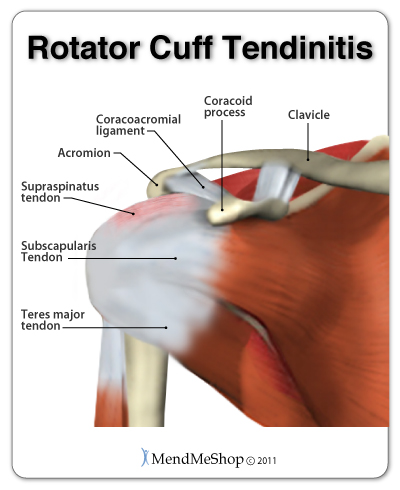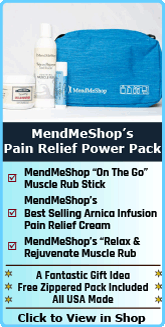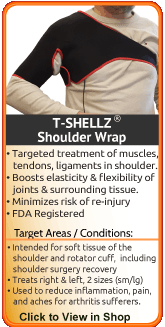|
| Rotator Cuff TendinopathyRotator Cuff Tendinitis The suffix "itis" means something is inflamed; therefore, the term rotator cuff tendonitis is used when a tendon in the rotator cuff is inflamed. Inflammation in a rotator cuff tendon is often due to irritation and/or micro-tearing of the collagen fibers. When the fibers tear, they become weaker, inflamed and swollen causing pain and tenderness in the area. There are 2 types of rotator cuff tendonitis; acute and chronic. Acute tendonitis refers to inflammation that comes on suddenly, usually from a shoulder injury, such as a dislocation, or overloading it during exercise. Chronic tendonitis occurs over time and generally results from long term repetitive use of one or some of the rotator cuff tendons. With both types of tendinitis, scar tissue develops on the tendon(s) as the tears to heal. This scar tissue mends the tears in an abnormal way leaving the collagen fibers connected, but weaker and more prone to further injury. In the case of chronic tendinitis rotator cuff tendon(s) may actually become thicker with a build up of scar tissue over a long period of time, making it more prone to impingement in the subacromial space. Rotator Cuff TendinosisThe term tendinosis refers to the non-inflammatory, degeneration, and weakening of the collagen fibers in a tendon. This tissue break down is often caused by repetitive stress on the fibers of the rotator cuff tendons and failure of the fibers to heal. If the rate of tissue damage exceeds the healing process rate, then eventually the accumulation of damage on the rotator cuff tendon is not able to heal properly. The collagen fibers eventually deteriorate to a point where the once straight, strong, flexible bundle is weakened by abnormally formed fibers that look more like a mess of strands. You may not feel any pain with tendinosis, which can lead to more damage as you continue to use the tendon. Since there is no inflammation either, you will not experience swelling, heat, redness or the significant pain that often accompanies inflammation. Rotator Cuff TenosynovitisTenosynovitis, also called paratendonitis or peritendinitis, is a term used to describe inflammation and degeneration of the tendon's outer layer or sheath. Depending on the tendon, the sheath is also called the synovium or paratenon. It is possible to suffer from tenosynovitis alone or in conjunction with the degeneration of the tendon(s), called tendinosis. In either case, as your body tries to heal, scar tissue forms inside the sheath, attaching the inner tissues of the tendon(s) to its outer covering, the paratenon. This scar tissue limits the gliding movement of the tendon in the paratenon reducing the range of motion and causing pain, tenderness, redness and swelling. Tenosynovitis is not common in the rotator cuff tendons but is often a condition of the long bicipital tendon, one of the two biceps tendons attaching the biceps to the humeral head at the shoulder. Biceps tenosynovitis causes pain in the rotator cuff and upper arm and may continue down the arm to the elbow. Tests for Rotator Cuff Tendon InjuriesYour doctor may take an x-ray to look for fractures, a loss of joint space in the shoulder, bone spurs or calcification in the tendon. An MRI may also be ordered to look at the soft tissue in the rotator cuff. This will give your doctor a clear picture of the muscles, tendons and ligaments in the shoulder, and will allow him or her to assess any damage. These assessments, along with some range of motion tests performed by your doctor, will determine the treatment options available to you. Treatment options will likely include physical therapy, supervised stretching and targeted exercises, cold compression, therapeutic ultrasound, heat therapy and rest of the affected tendons. You will find that Click HERE to Go To Our Online Store We take all major credit cards and Paypal. Product specialists are available 9:00 am to 5:00 pm Eastern Standard Time Monday to Friday. If any question or concern arises, call us or simply send us an email at any time (we check our emails constantly all throughout the day and night.. even on holidays!). We will respond as soon as possible. North America Toll Free 1-866-237-9608 |
|



